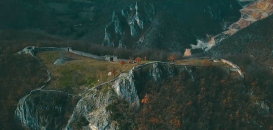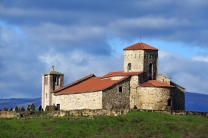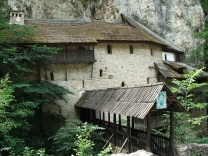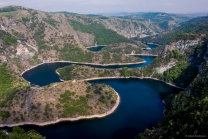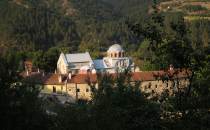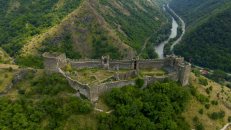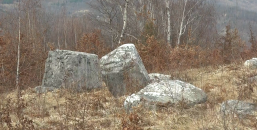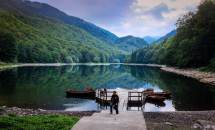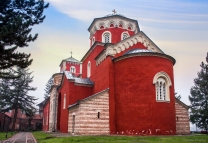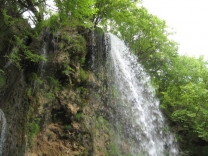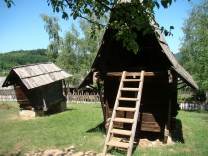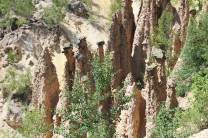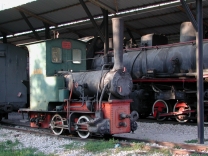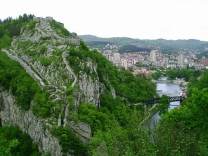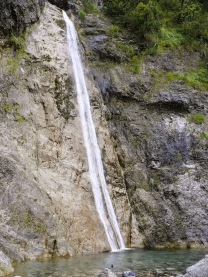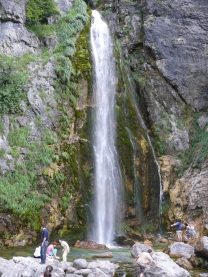No video yet

Sopoćani
Coordinates: 43°7′5″N 20°22′26″E / 43.11806°N 20.37389°E / 43.11806; 20.37389
The Sopoćani (Serbian Cyrillic: Сопоћани, pronounced [sǒpotɕani]), an endowment of King Stefan Uroš I of Serbia, was built from 1259 to 1270, near the source of the Raška River in the region of Ras, the centre of the Serbian medieval state. It is a designated World Heritage Site, added in 1979 with Stari Ras.
History
Detail of the fresco Dormition of the Mother of God from Sopoćani c. 1265 (See also:Palaiologian Renaissance)In the 1160s, the Great Zupan Stefan Nemanja consolidated his power on the throne in Raska. Although Nemanja's sons got the title of king and established the church as independent by making it autocephalous, developed the economic system and coined money, became richer and more sophisticated, the times, the work and person of Stefan Nemanja remained a great model and an example to be emulated by the younger generations. Sopoćani was an endowment of the Serbian King Stefan Uroš I, son to Stefan the First-Crowned and Nemanja's grandson. It was built in 1260 by King Uroš I Nemanjić as a church which would serve as his burial place, and was extended and renovated in the mid-14th century by his great-grandson Dušan. The church is dedicated to the Holy Trinity. Of the former larger monastery complex, which comprised numerous structures (dining rooms, residential buildings and others), today only the Church of the Holy Trinity remains. The monastery was once surrounded by a high stone wall with two gates. The completion of the painting of the main parts of the church can be indirectly dated to between 1263 and 1270. In Sopocani a decorative plan was carried out which was formed throughout the thirteenth century - in the chancel there are liturgical scenes, in the nave Christ's salvation work is shown through a cycle of the Great Feasts, in the narthex the Old Testament, dogmatic and eschatological themes are presented. Through the iconographic portraits of the Nemanjic family and through historical scenes Simeon Nemanja and Saint Sava. After Gradac (about 1275), the endowment of Queen Helen of Anjou, the wife of...






